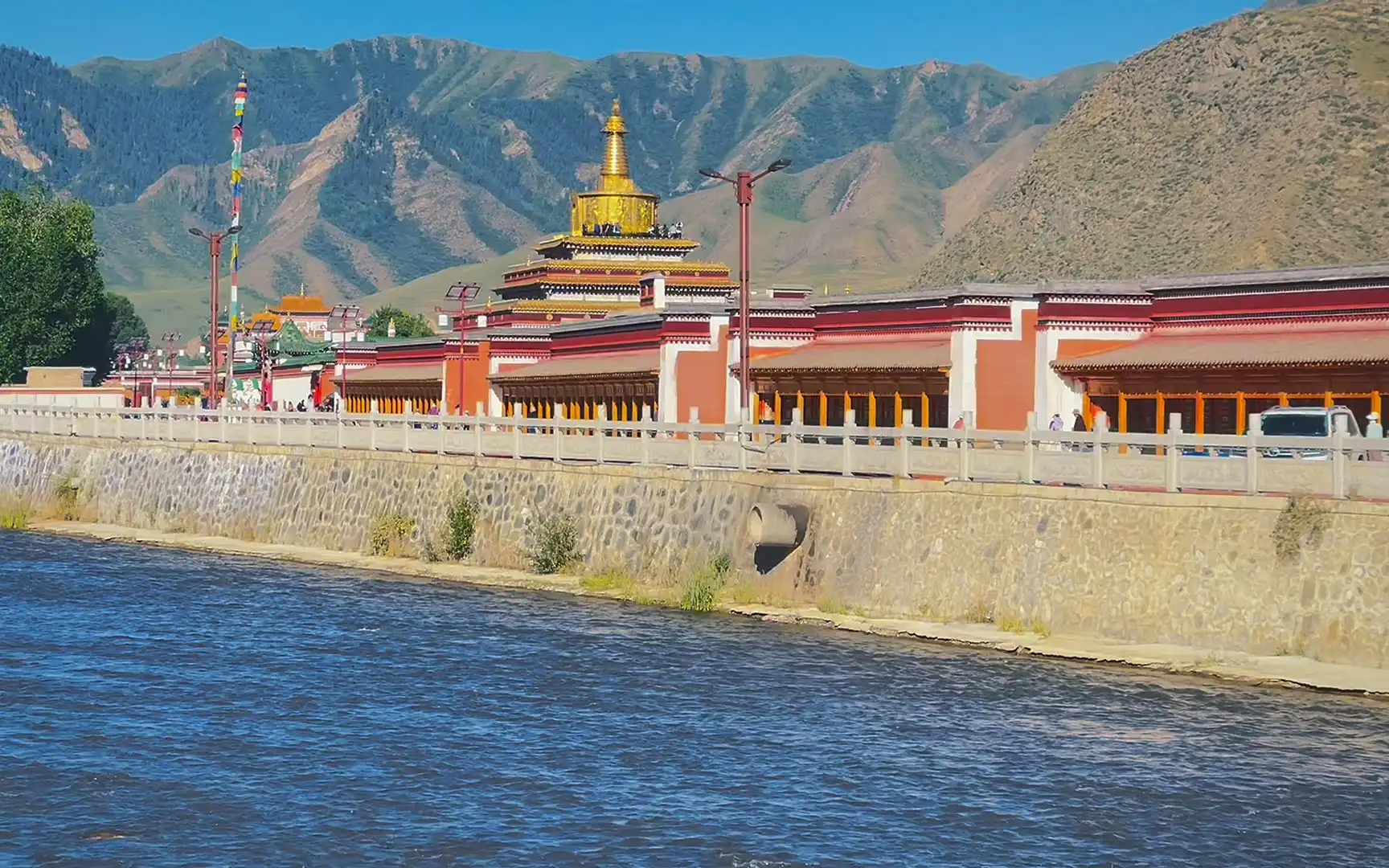Welcome to Labrang Monastery, one of the most significant Tibetan Buddhist monasteries in China, located in Gannan Tibetan Autonomous Prefecture, Gansu Province. As a travel professional, I am delighted to introduce you to this extraordinary destination that offers a unique blend of spiritual depth, cultural richness, and architectural splendor.
Cultural Background
Labrang Monastery, founded in 1709 by the first Jamyang Zhépa, Ngawang Tsöndru, is a renowned center of Tibetan Buddhist learning. It belongs to the Gelug school of Tibetan Buddhism and has historically been a vital hub for religious and cultural activities. The monastery is renowned for its vast collection of Buddhist scriptures, intricate murals, and stunning architecture. It also hosts numerous religious festivals throughout the year, attracting pilgrims and visitors from across the globe.
Unique Experiences
Visiting Labrang Monastery offers a profound and enriching experience. You can explore the monastery’s numerous temples, prayer halls, and colleges, each with its own unique history and significance. The highlight is the Great Prayer Hall, which houses a magnificent golden statue of Shakyamuni Buddha. The monastery also features a vast library with thousands of ancient texts and manuscripts. Additionally, you can participate in the daily prayer sessions and witness the monks’ chanting and rituals, providing a deep spiritual connection.
Location and Transportation
Labrang Monastery is located in Xiahe County, Gannan Tibetan Autonomous Prefecture, Gansu Province. The nearest major city is Lanzhou, the capital of Gansu Province. From Lanzhou, you can take a bus or a private car to Xiahe. The journey takes approximately 3-4 hours by bus, depending on traffic conditions. There are also direct flights to Xiahe from major cities in China.
Best Time to Visit
The best time to visit Labrang Monastery is during the spring and autumn months (March to May and September to November). The weather is mild and pleasant, making it ideal for exploration. Additionally, these seasons offer beautiful natural scenery, with vibrant colors and fewer tourists. The summer months (June to August) are also a good time to visit, especially if you want to witness the vibrant festivals and activities.
Tourist Route
- Entrance and Orientation: Start your visit at the entrance of the monastery, where you can pick up a map and get an overview of the area.
- Great Prayer Hall: Begin your exploration at the Great Prayer Hall, which houses a magnificent golden statue of Shakyamuni Buddha. This is the heart of the monastery and a must-see.
- Monastic Colleges: Visit the various monastic colleges, each dedicated to different aspects of Buddhist learning. The Sutra Hall and the Medical College are particularly noteworthy.
- Library and Archives: Explore the vast library, which houses thousands of ancient texts and manuscripts. This is a treasure trove for scholars and history enthusiasts.
- Prayer Wheels and Stupas: Take a leisurely walk around the monastery, spinning the prayer wheels and visiting the various stupas. This is a peaceful and reflective experience.
- Daily Prayer Sessions: If your schedule allows, participate in the daily prayer sessions. Witnessing the monks’ chanting and rituals is a deeply spiritual experience.
Dining Recommendations
While in Xiahe, be sure to try some local Tibetan specialties. The region is known for its delicious and hearty cuisine. Some must-try dishes include:
- Tibetan Butter Tea: A traditional Tibetan beverage made from butter, tea, and salt. It is rich and warming, perfect for the cool climate.
- Momos (Tibetan Dumplings): These dumplings are filled with meat or vegetables and are a popular snack.
- Tsampa: A traditional Tibetan staple made from roasted barley flour. It is often mixed with butter tea and eaten as a porridge.
- Roast Lamb: A popular dish in the region, roast lamb is tender and flavorful, often served with a variety of dipping sauces.
Opening Hours
Labrang Monastery is open daily from 8:00 AM to 6:00 PM. Some areas may have slightly different opening hours, so it is advisable to check in advance.
Photography Spots
The monastery offers several excellent spots for photography. Some of the best locations include:
- Great Prayer Hall: The exterior and interior of the Great Prayer Hall provide stunning views and photo opportunities.
- Monastic Colleges: The various colleges and temples offer intricate architectural details and cultural insights.
- Prayer Wheels and Stupas: The rows of prayer wheels and the beautiful stupas create picturesque scenes.
- Monks in Prayer: With permission, you can capture the monks in their daily routines, providing a unique glimpse into monastic life.
Seasonal Features
Each season brings its own unique charm to Labrang Monastery. In spring, the area is adorned with blooming flowers, while autumn offers vibrant foliage. Winter brings a serene, snow-covered landscape, and summer provides lush greenery and vibrant festivals.
Accommodation Suggestions
For a comfortable stay, there are several accommodation options available in Xiahe. Some recommended choices include:
- Local Hotels: There are several well-appointed hotels in the area that offer modern amenities and a comfortable stay.
- Guesthouses: For a more local experience, consider staying in a guesthouse. These often provide a homely atmosphere and a chance to interact with local residents.
- Monastery Guesthouse: For a truly unique experience, you can stay in the monastery’s guesthouse, which offers a simple and authentic stay.
On behalf of Labrang Monastery, we warmly welcome you to this sacred and inspiring destination. We hope your visit will be a memorable and enriching experience, allowing you to connect with the spiritual and cultural heritage of Tibetan Buddhism. Whether you are a spiritual seeker, a cultural enthusiast, or simply looking for a unique travel experience, we are confident that Labrang Monastery will leave a lasting impression on you.
